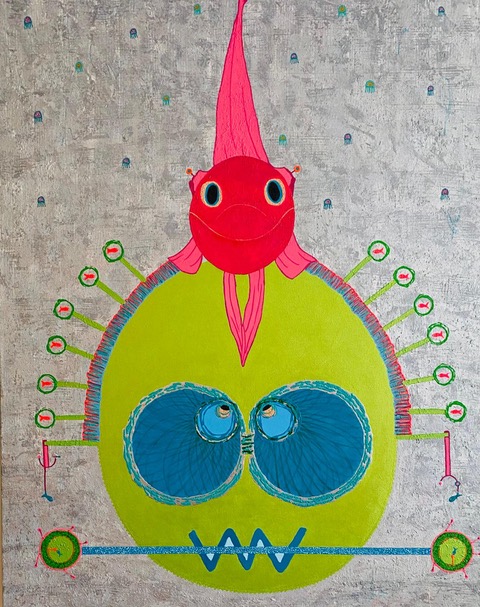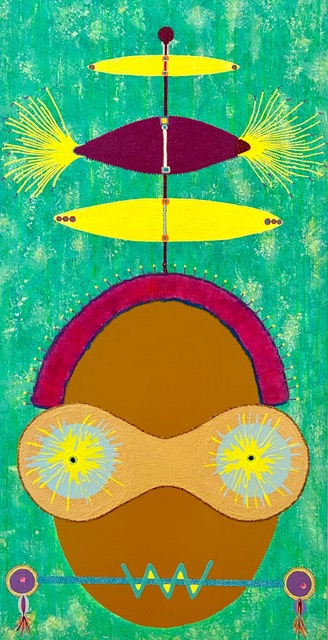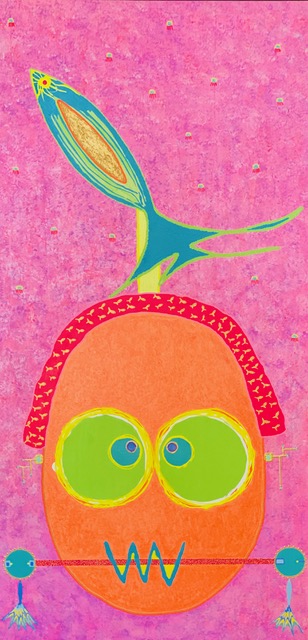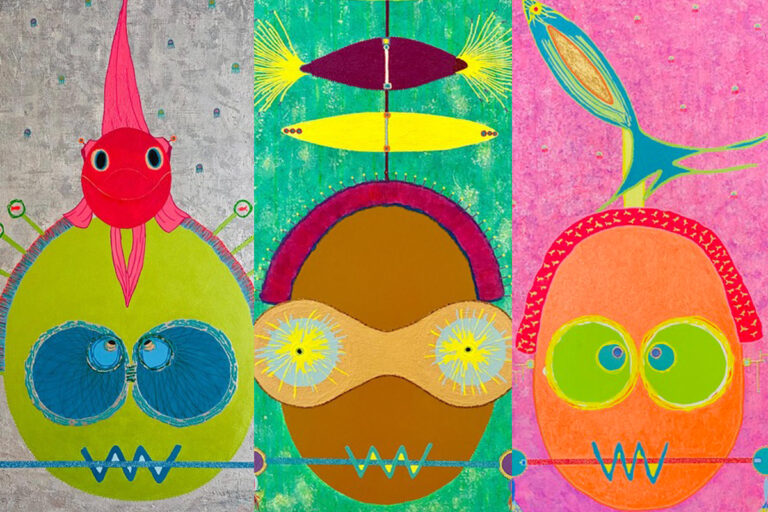Carlotta Schiavio, also known by her artistic persona YaTii Talisman, brings a fascinating mix of cultural heritage and experience to her art. Born in Italy and raised in Ethiopia, her identity is shaped by a rich fusion of Italian, Russian, Syrian, Austrian, and Ethiopian roots. She began her artistic journey in jewelry design before shifting to painting in 1998. Since then, her creativity has spanned continents, leading to a significant milestone in 2022 when her work was featured in a permanent exhibition at the National Library “Abrehot” in Addis Ababa.
Her artistic path is one of continuous growth and discovery. The year 2000 marked the creation of her imaginative universe, YaTii, which later evolved into YaTii Talisman. This creative world is populated by the Bugibatuki, celestial beings who represent harmony, solving problems with positivity and without conflict. One of her latest works, “The Bugibatuki,” exemplifies her experimental approach and showcases her ability to blend intuition with various techniques.

Bugibatuki “Tenshi”
One of Carlotta’s standout pieces from 2023 is Bugibatuki “Tenshi”. The story behind the painting takes place in Fukushima, Japan, a location heavily impacted by the 2011 nuclear disaster. In this piece, Tenshi, meaning “angel” in Japanese, arrives from space to help restore the environment. His mission is to rejuvenate the local aquatic life, particularly the fish and jellyfish populations, which were devastated by the fallout. Through this act of restoration, Tenshi not only brings life back to the ecosystem but also revives the spirits of the local people who rely on these waters for their livelihood.
The 120×152 cm mixed media canvas breathes with energy and renewal. The use of layered textures gives the painting a physical presence, making the scene feel alive with the process of healing. The muted blues and greens echo the sea and sky, while the vibrant life of the fish and jellyfish adds a sense of hope. In Tenshi’s quiet but impactful presence, Carlotta captures the essence of regeneration and resilience, themes that echo beyond the canvas and resonate with anyone familiar with the tragedy of Fukushima.

Bugibatuki “Habibi”
In Bugibatuki “Habibi” (2024), Carlotta’s attention shifts to Gaza, a region marked by ongoing conflict. Habibi, which translates to “my love” in Arabic, symbolizes hope and unity in this war-torn environment. He arrives in his spaceship, adorned with protective goggles and equipped with an antenna to communicate with his home base. His task is not only to survive the chaos but to transmit messages of peace and love back to his station, offering a form of connection in an otherwise divided space.
Measuring 92×180 cm, Bugibatuki “Habibi” is both visually and conceptually rich. The figure of Habibi, with his goggles and antenna, is a symbol of resilience in the face of adversity. His ability to communicate represents the importance of staying connected, even in the hardest of times. The Arabic title emphasizes the universal need for love and understanding, reminding viewers that empathy and collective action are vital, no matter where we are. The mixed media technique in this piece gives it a textured, almost raw feel, reflecting the intensity of the region it represents, but also the hope that Habibi brings.

Bugibatuki “Jemeela”
The 2024 piece Bugibatuki “Jemeela” introduces another character in Carlotta’s Bugibatuki series. Jemeela, meaning “beautiful” in Arabic, lands on the Dahlak Archipelago in the Red Sea, a place known for its striking marine life and cultural diversity. Jemeela’s mission is to spread peace and unity across the archipelago, using the beauty of the location as a backdrop for her work. The island group’s natural wonders and rich history provide an ideal setting for this peaceful intervention.
The 92×180 cm canvas showcases Carlotta’s ability to fuse landscape and figure seamlessly. Jemeela is not only a symbol of peace but also of the beauty found in cooperation and understanding. The vibrant colors of the sea and sky contrast with the delicate details of the archipelago’s marine life, creating a harmonious balance between the natural world and Jemeela’s mission. Through her, Carlotta explores the idea that peace is something beautiful, something that requires effort and attention but is always worth striving for.
Conclusion
Carlotta Schiavio’s Bugibatuki series offers a compelling look at the intersection of art, culture, and healing. Each of her works—Tenshi, Habibi, and Jemeela—tells a story of hope, resilience, and unity. Through her use of mixed media, Carlotta brings these celestial beings to life, imbuing them with the power to heal and transform. Her works go beyond the canvas, prompting viewers to think about how art can not only reflect the world but also change it. The Bugibatuki are more than just characters—they are embodiments of the possibilities that arise when we choose to approach life with positivity, empathy, and creativity.

